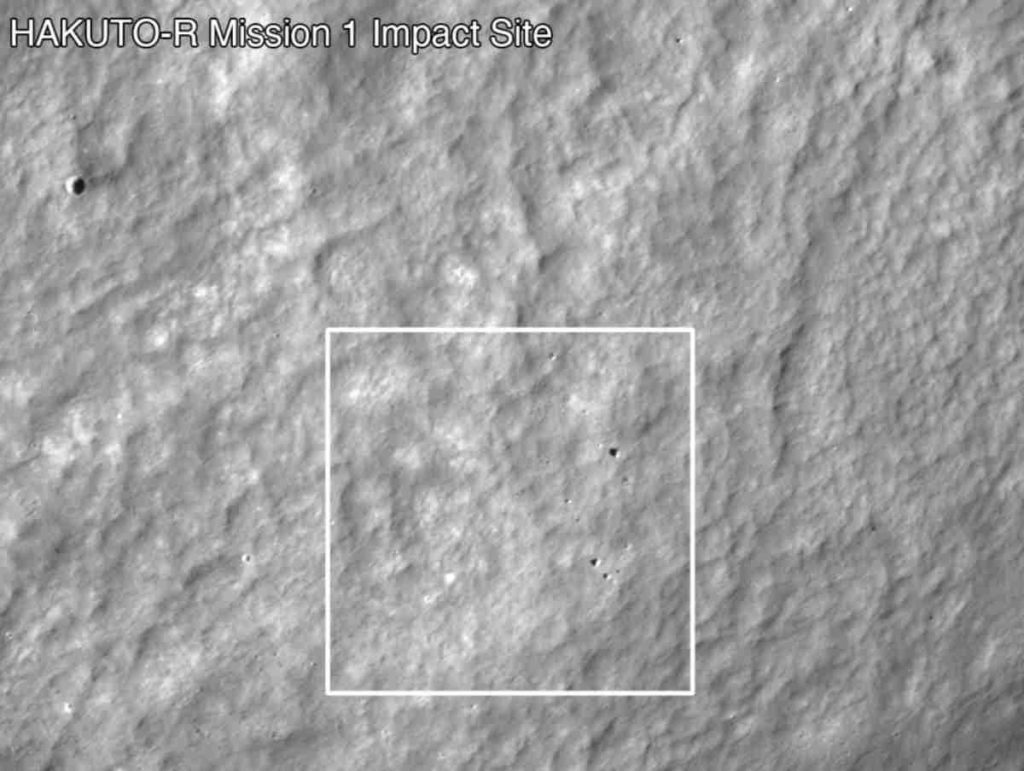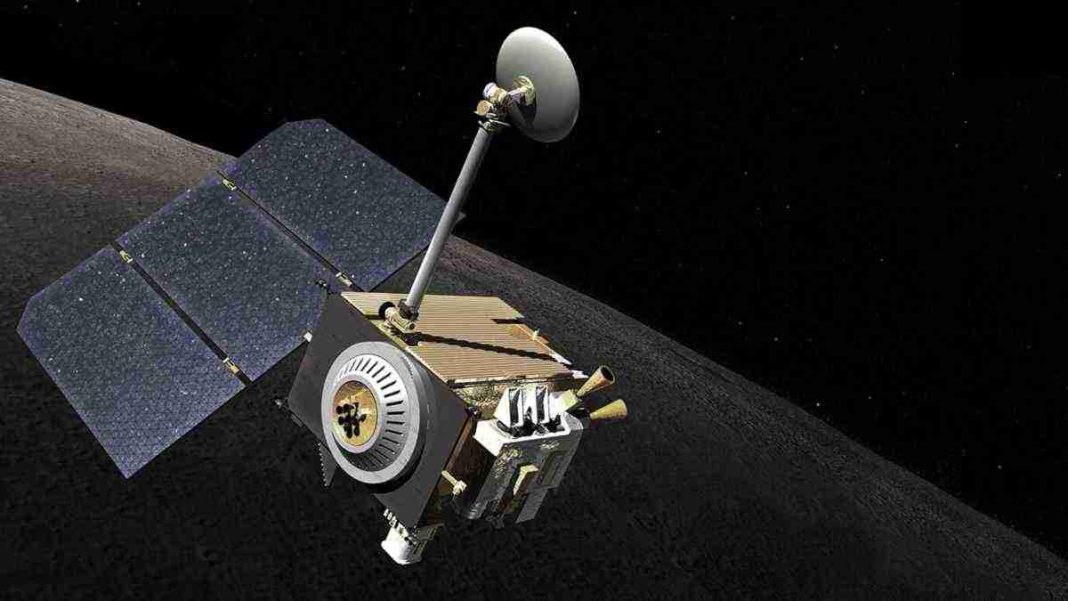UNITED STATES/JAPAN: In a recent development, NASA’s Lunar Reconnaissance Orbiter (LRO) has unveiled the crash site of Japan’s private Hakuto-R mission on the Moon’s surface. The ill-fated spacecraft, launched by the Japanese company ispace, met with an unfortunate end during its landing attempt in April. The LRO has captured the first images of the crash site, providing a glimpse of the scattered remnants of the lunar lander and its associated parts.

The Hakuto-R mission, aimed at landing near the Atlas crater, encountered a critical event during its descent from an altitude of 100 kilometers above the lunar surface. Instead of successfully reaching its intended landing site, the spacecraft tragically crashed, dashing the hopes of the mission team. However, the Lunar Reconnaissance Orbiter, ever vigilant above the Moon, has now furnished us with invaluable visuals of this lunar graveyard.
The images, acquired by the LRO’s Narrow Angle Cameras, cover an area measuring approximately 40 km by 45 km. By comparing these images with a pre-landing photograph, the LRO Camera Science team was able to detect significant alterations in the lunar landscape near the expected touchdown point. The wreckage of the Hakuto-R lander can be seen dispersed across the lunar surface in several prominent fragments, bearing witness to the violent crash.
“These striking images will undergo thorough analysis over the coming months, as the LRO continues to capture additional observations of the site from different lighting conditions and viewing angles,” stated NASA in a recent press release, emphasizing the importance of this discovery for lunar exploration.
According to telemetry data retrieved from the ill-fated spacecraft, the Hakuto-R lander encountered an unexpected acceleration during its descent. Instead of decelerating from its speed of 6,000 kilometers per hour to a standstill over the final 100 kilometers, the lander went into an unrestrained free-fall towards the Moon’s surface.
This uncontrolled descent occurred due to the depletion of the lander’s fuel reserves, which would have otherwise powered the thrusters responsible for a controlled landing.
During a press conference, Ryo Ujiie, Chief Technology Officer of ispace, the company behind the Hakuto-R mission, explained, “It apparently went into a free-fall towards the surface as it was running out of fuel to fire up its thrusters.” This unforeseen turn of events sealed the mission’s fate and brought a premature end to the ambitious lunar landing endeavor.
The Hakuto-R lander had achieved lunar orbit just a month before the crash, following its launch atop a SpaceX Falcon-9 rocket in December of the previous year. The Japan Aerospace Exploration Agency (JAXA), toymaker Tomy, and Sony Group collaborated to develop a small, two-wheeled rover that was the mission’s main goal. Additionally, the mission aimed to introduce the United Arab Emirates’ four-wheeled “Rashid” rover to the lunar surface.
As scientists and engineers meticulously study the images acquired by the LRO, the crash site of the Hakuto-R mission stands as a poignant reminder of the challenges and risks involved in lunar exploration. The findings from this unfortunate incident will undoubtedly contribute to future missions, providing valuable insights for the advancement of lunar landing technologies and enhancing the safety and success of upcoming endeavors.
As the Lunar Reconnaissance Orbiter continues to survey the Moon from above, its comprehensive observations and images serve as a testament to humanity’s unwavering curiosity and determination to explore and understand the celestial bodies that surround us.
Also Read: NASA Set to Unveil Partner for Lunar Lander Development in Historic Artemis Moon Mission



